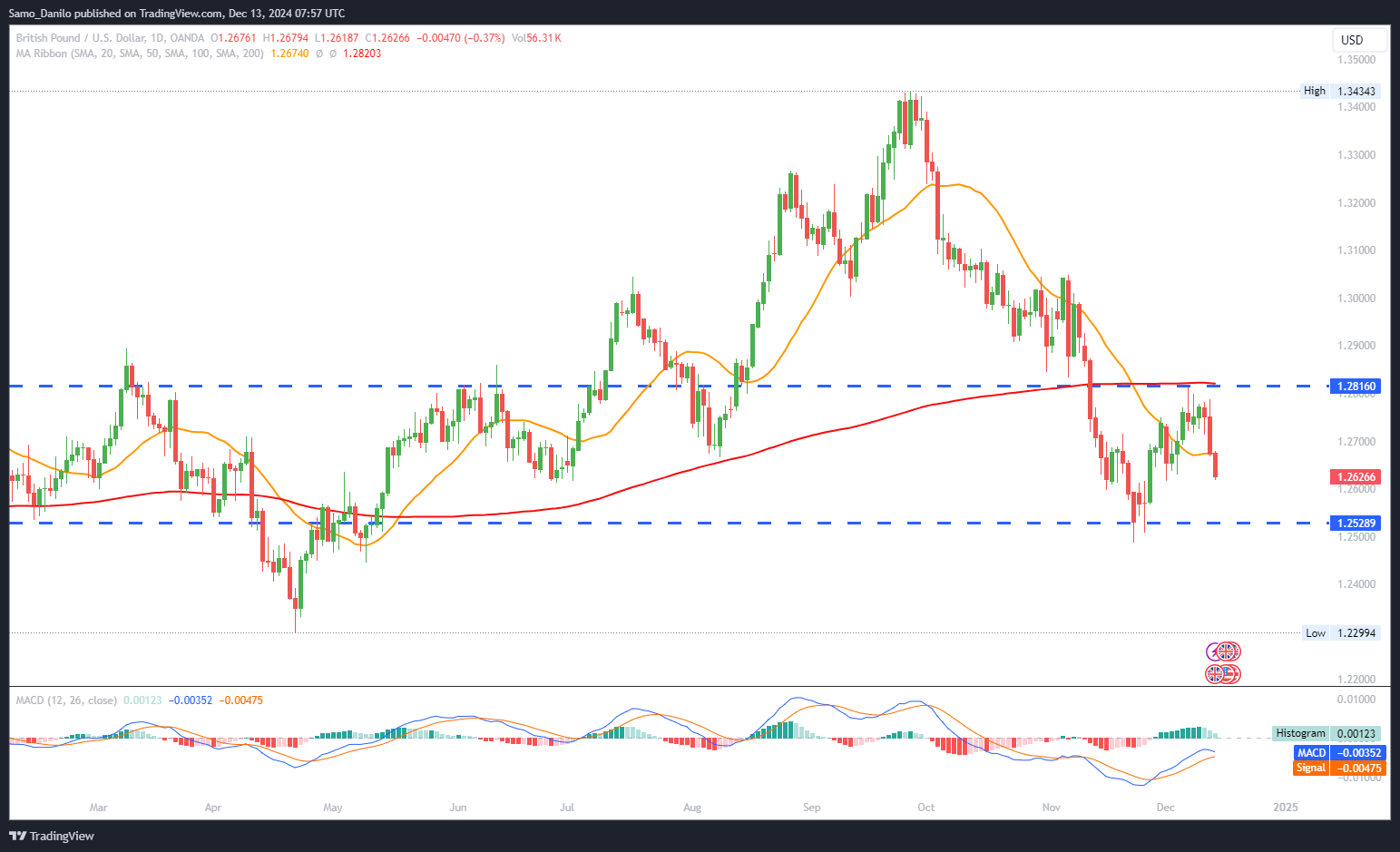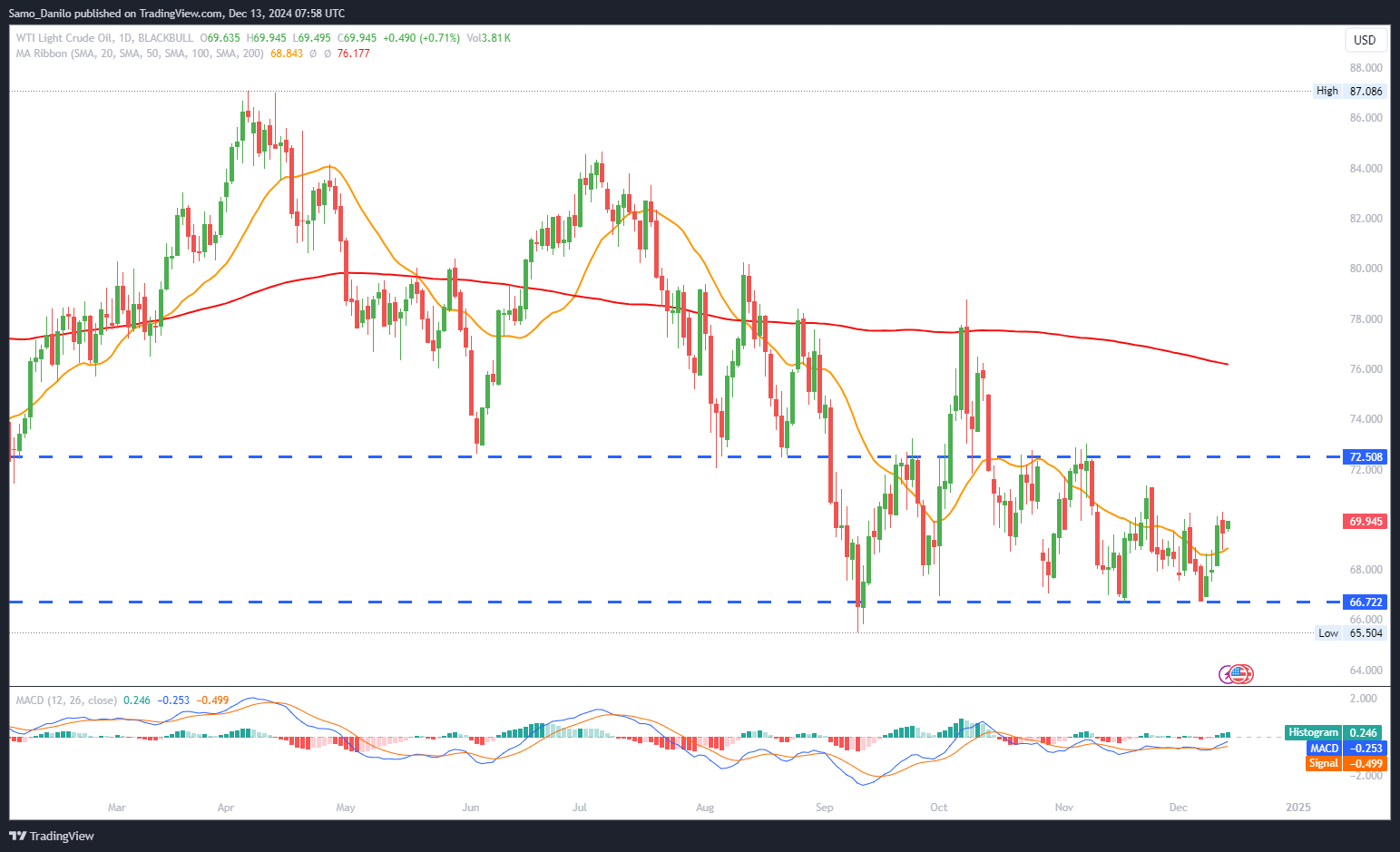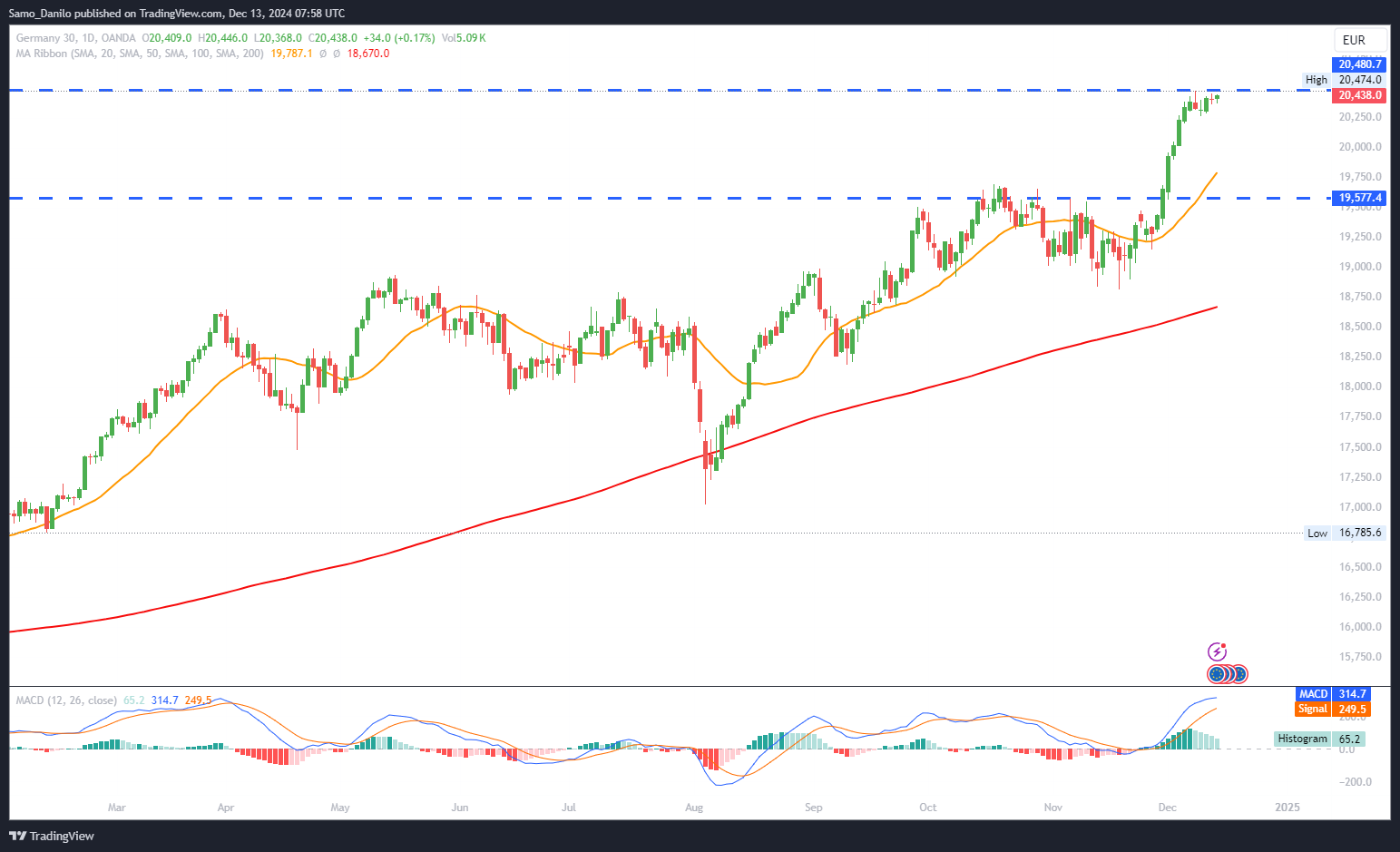EURUSD
- EUR/USD Price: EUR/USD fell for the sixth straight session on Friday, slipping another 0.2% and moving further below the 1.0500 level. The persistent weakness reflects ongoing market concerns over the Euro's diminishing appeal.
- ECB Rate Cut: The European Central Bank (ECB) reduced its main reference rates by 25 basis points, further eroding support for the Euro. This decision underscores the ECB's focus on combating sluggish economic growth and fostering its disinflationary goals.
- Policy Statement: The ECB's latest monetary policy statement removed the term “restrictive,” signaling a shift to a more accommodative stance. Policymakers highlighted that the “disinflation process is well on track” and that core inflation metrics are expected to stabilize near the 2% target.
- Lagarde’s Remarks: In her press conference, ECB President Christine Lagarde expressed confidence in meeting inflation goals by 2025 but acknowledged downside risks to economic growth. She described inflation risks as more balanced, reflecting a nuanced outlook on future monetary policy.
- Limited Economic Data: A quiet data calendar on Friday leaves traders focusing on next week’s Purchasing Managers Index (PMI) for fresh insights into Eurozone economic performance. The lack of immediate catalysts may see EUR/USD consolidating around current levels.
Closing statement: EUR/USD continues to face downward pressure, weighed by a dovish ECB stance and limited market support. While the Euro remains vulnerable, traders will look to next week’s PMI data for directional cues. A cautious approach is warranted as risks to growth and inflation dynamics evolve.
GBPUSD
- GBP/USD Price: GBP/USD remains under selling pressure, trading below the 1.2650 level during Friday's European session. The pair's recent losses reflect a combination of weaker UK economic data and US Dollar strength.
- UK GDP: The UK’s Gross Domestic Product (GDP) contracted by 0.1% month-on-month in October, highlighting ongoing economic struggles. This data weighed heavily on the Pound, further exacerbating the pair's decline.
- US PPI: A hotter-than-expected US Producer Price Index (PPI) report released on Thursday supported the US Dollar. The PPI rose 0.4% month-on-month in November, marking the largest monthly increase since June, and added to the bearish sentiment surrounding GBP/USD.
- UK Factory Data: Market participants are closely watching the release of October’s UK factory output data for further insights into the economic outlook. Weak factory data could add downward pressure on the Pound.
- Fed Interest Rate: Traders await next week's Federal Reserve interest rate decision, with financial markets fully pricing in a 25-basis point rate cut on December 18. Anticipation of the Fed’s action is likely to keep the US Dollar well-supported in the short term.
Closing statement: GBP/USD continues to face headwinds from weak UK data and robust US economic releases. As traders await further updates, particularly from the Fed and UK factory data, the pair is likely to remain vulnerable. Short-term outlook leans bearish unless the Pound finds support from upcoming economic indicators.
XAUUSD
- Gold Price: Gold prices (XAU/USD) maintain an intraday positive tone in early European trading on Friday but fail to extend gains decisively, remaining capped below the $2,700 psychological resistance level.
- US Producer Price Data: The US Producer Price Index (PPI) for November came in hotter than expected, rising 0.4% month-on-month. On a yearly basis, PPI accelerated to 3%, up from 2.6% in October. This has reinforced speculation about the Federal Reserve's interest rate trajectory, which is key to gold's performance.
- Russia-Ukraine Developments: Ongoing geopolitical conflicts lend support to the safe-haven appeal of gold. Ukraine's use of US-supplied missiles to target Russian territories and intensified fighting near Pokrovsk underscore persistent geopolitical risks.
- Syria Developments: Israel’s decision to maintain a military presence in Syria following the regime's collapse adds to market uncertainty.
- Fed Policy Decision: Investors are closely monitoring next week’s Federal Open Market Committee (FOMC) meeting. The Fed’s policy outlook will be pivotal in determining USD strength and, consequently, gold price movements.
Closing statement: Gold prices are supported by geopolitical tensions but face headwinds from stronger US economic data. The Federal Reserve's upcoming policy decision remains the key determinant of near-term direction, with a break above $2,700 likely contingent on dovish Fed commentary or escalating global risks.
CRUDE OIL
- WTI Price: West Texas Intermediate (WTI) Crude Oil prices remain under pressure during the European session on Friday, trading defensively below the $70.00 mark reached on Thursday. The lack of follow-through buying highlights cautious market sentiment amid mixed catalysts.
- OPEC+ Delays Supply Increases: OPEC+ has decided to delay planned supply increases by three months, pushing them to April 2024. Additionally, the group extended the full unwinding of production cuts until the end of 2026, signaling efforts to balance the market against potential oversupply risks.
- IEA Demand Forecast: The International Energy Agency (IEA) revised its 2025 global oil demand growth forecast upward to 1.1 million barrels per day (bpd), compared to the previous estimate of 990,000 bpd. This outlook supports the long-term demand narrative for crude oil, albeit near-term uncertainties remain.
- Rosneft Supply Deal: Russian oil giant Rosneft has reached an agreement to supply approximately 500,000 bpd of crude to India's Reliance Industries, reinforcing Russia’s pivot toward Asian markets amid Western sanctions. This deal underscores shifting global supply dynamics.
- US Crude Stockpiles: The Energy Information Administration (EIA) reported a significant 1.3 million barrel drawdown in crude inventories at Cushing, Oklahoma. This marks the steepest decline since early September, likely driven by reduced imports from Canada, per Bloomberg.
Closing statement: Crude oil prices remain range-bound amid conflicting signals. OPEC+ supply adjustments and IEA demand revisions lend medium-term support, while geopolitical factors and shifting trade dynamics add complexity. A sustained break above $70 requires a combination of bullish inventory trends and renewed demand optimism.
DAX
- DAX Price: The DAX rose by 0.13% on Thursday, adding to Wednesday’s 0.34% gain and closing at 20,426. Positive sentiment was driven by the ECB’s rate cut decision, which buoyed market confidence amid a challenging macroeconomic environment.
- Auto Stocks: Auto stocks were the primary drivers of Thursday’s gains, with BMW surging 1.91%. Mercedes Benz Group (+1.02%), Volkswagen (+0.86%), and Porsche (+0.36%) also ended in positive territory, supported by expectations of stronger demand from China following stimulus measures.
- German Exports: October trade data released on Friday revealed a 2.8% month-on-month decline in German exports, extending September’s 1.7% drop. The weakening export trend highlights the adverse impact of slowing global demand on Germany’s export-heavy economy.
- German Wholesale Prices: German wholesale prices fell by 0.6% year-on-year in November, pointing to deflationary pressures within the domestic economy. This could complicate efforts to revive growth and may influence further ECB policy actions.
- DAX Outlook: Near-term DAX performance will depend on central bank policy direction, US tariff developments, and the effectiveness of Beijing’s stimulus measures. These factors will shape investor sentiment and market trends in the weeks ahead.
Closing statement: The DAX continues to edge higher, bolstered by the ECB’s monetary easing and gains in the auto sector. However, weak trade and deflationary signals pose risks to sustained growth. Monitoring global policy and trade dynamics will be critical to assessing the DAX’s outlook.




